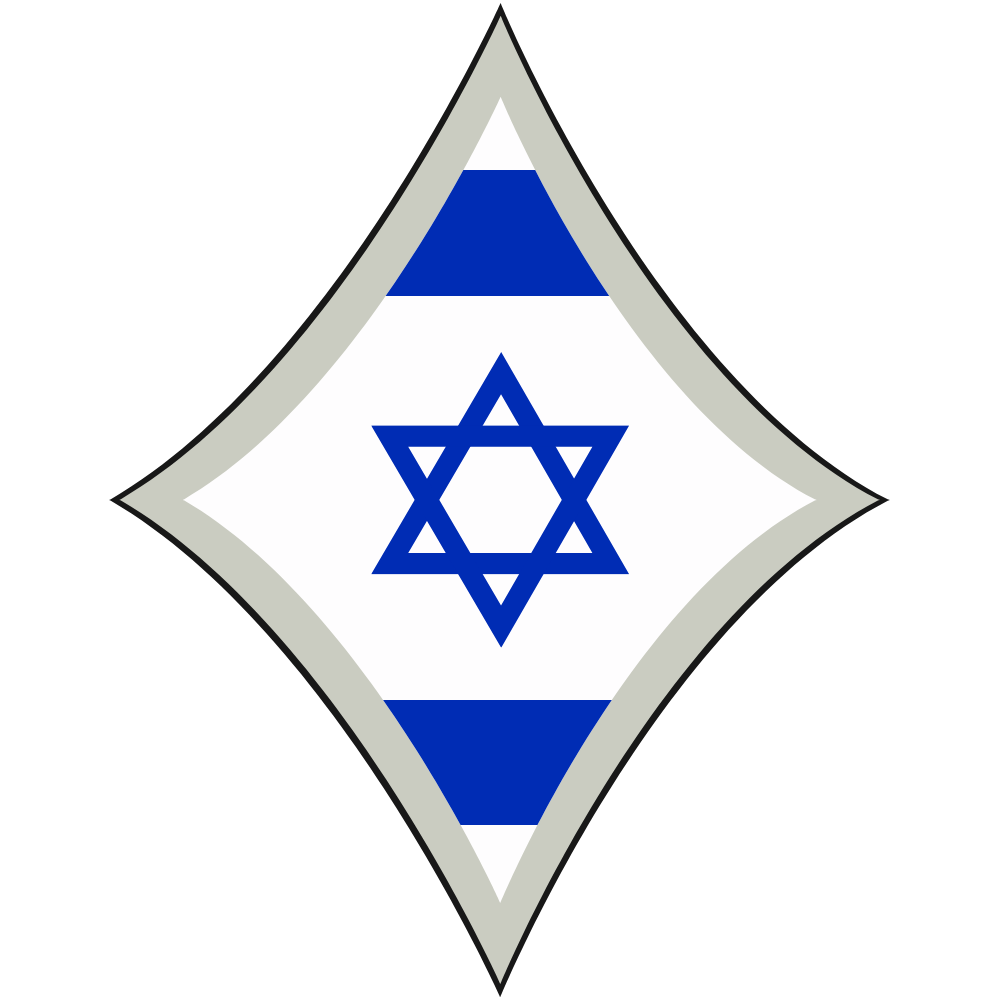Introduction
The Tamar was Israel’s second Sherman tank. You may think a tank with such a title would have a well-documented history with few mistakes, but you would be mistaken.
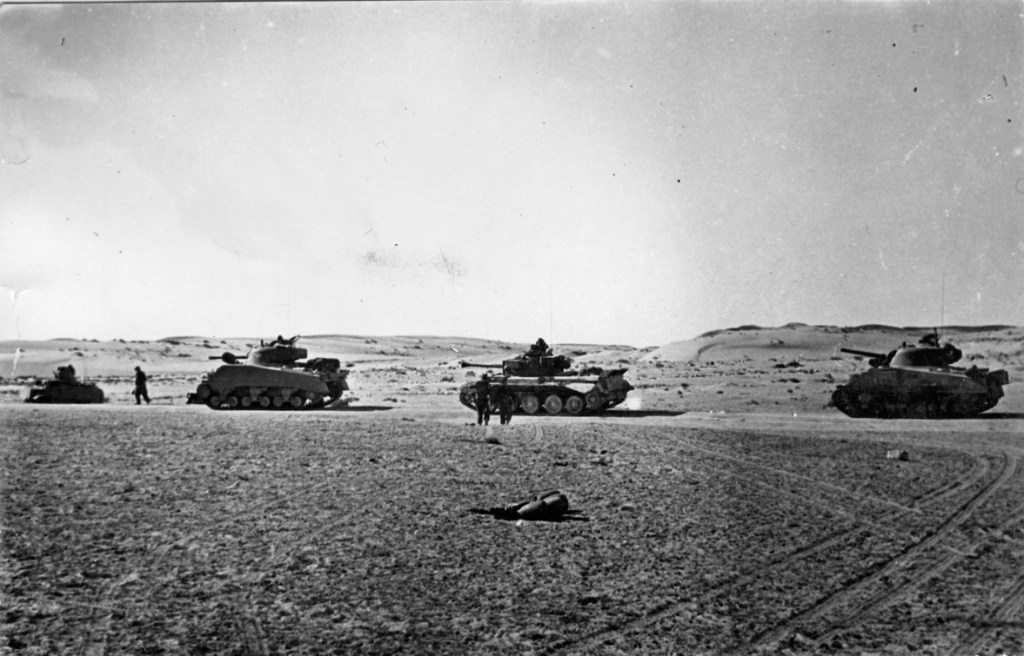
The currently accepted narrative of early Israeli Shermans is almost entirely incorrect, full of myths, misconceptions, and research mistakes. This led many historians and authors to claim an utterly fictitious narrative, and Tamar’s story is also wildly affected by it. Everything from Tamar’s origin to its fate is foggy at best. Even what kind of Sherman it was is usually wrongly misidentified; some of the most highly regarded sources on Israeli tanks have made mistakes relating to these tanks. From Thomas Gannon to even the Yad la Shiryon Museum itself.
1. From Italy to Israel
On June 28th, 1948, Yerocham Kafkafi (technical officer of Brigade 8 and ex-British army technician during World War Two) wrote to Yitzchak Sade, commanding officer of Brigade 8, that there was a lack of replacement parts for the tanks (two Crommwells, one M4A2 Sherman, and ten H.39s). At the same time, the Israel Defense Forces (IDF) wanted to expand its tank force, which did not even have 20 tanks at the time, compared to over 100 tanks in the Arab countries. On August 12th, 1948, Yitzchak Sade told Kafkafi that he was going to Italy to search for and buy Shermans; he was to purchase 36 Shermans. He inspected 120 Shermans in different Italian scrap yards full of leftover vehicles of American and British origin from World War Two.
30 M4 (105mm) Shermans were purchased from a scrapyard in the town of Forlì for 2,200 dollars each (27,692 dollars in 2023) and brought to Israel by ship in three different shipments. However, during their time in the scrapyard, the tanks were disabled after drilling a hole in the barrel, which led to the need to replace the defective cannons, which was only achieved on two Shermans from this purchase by the end of the war, Tamar and Ruth II; this also led to the short-lived Krupp Shermans.
| Date of arrival at Haifa port | Amount of Shermans |
| 17.11.1948 | 10 |
| 24.11.1948 | 12 |
| 3.1.1949 | 8 |
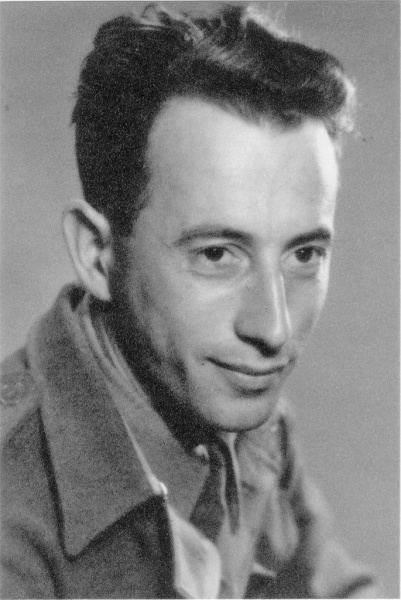
2. The three Shermans
The Tamar was the first tank to be fully repaired and pressed into service from this purchase however, there was one Sherman already in service, the M4A2 Meir, the Meir’s name derives from the name of the newborn son of one of the mechanics who repaired it, unlike the Tamar, the Meir was acquired via bribery of a British soldier stationed in mandatory Palestine while the British were leaving, the Meir was supposed to be thrown down a valley instead, it was put on a Diamond T tank transporter and sent to Tel Aviv, where using scrap yard parts it was slightly upgraded and brought up to functioning order, except for the 75mm cannon, which a replacement for could not be located, so instead, a 20mm Hispano-Suiza 404 cannon was put inside a metal tube and installed in place of the cannon, this was later switched for an M3 75mm cannon which was bought in Italy in September. Three cannons were purchased, one on the Meir, another on the Tamar, and the last on Ruth II. The Meir is also unique because it was the only tank to:
- receive an IDF number during the war (3999);
- be a small hatch Sherman, which was the only small hatch Sherman until the 50s;
- change its name and gender.
During the ending stages of the war, Meir’s male name was changed to Mania, a feminine name, thus making it the first transgender tank of the Israeli army. Around the same time, the Meir got its new cannon, the Tamar joined the fight, and Ruth II shortly after that. The three were in service in Battalion 82 of Brigade 8, fighting on the southern front of the war against Egypt.
During the push northwards towards El-Arish, which started on December 29th, 1948, at 13:15, the Israelis were confronted by well-entrenched Egyptians equipped with anti-tank cannons, the tanks of the battalion quickly came under heavy anti-tank fire, one tank was hit in the track and got stuck in soft sand, and another tank soon rushed to help it, however on the way, the rescuing tank drove over a land mine and, its track and suspension bogies completely broke, which, combined with the Sinai sand, rendered the tank completely stuck, even after multiple rescue attempts, it was all in vain, and the tank was blown up to prevent capture the following day, the tank which lost the track due to enemy anti-tank fire was towed back to safety and repaired at 22:00 December 29th.
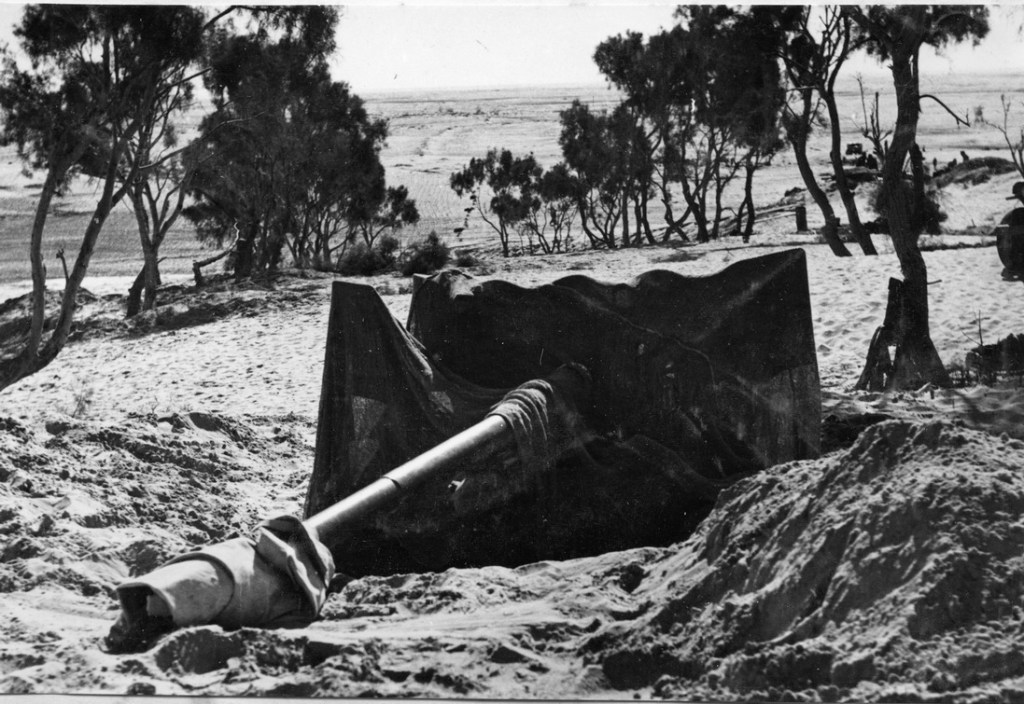
2.1 The big myth
It is a common myth that the Tamar is the tank that got blown up in this story. This originates from a research mistake done by either Moshe Givati or Yad La-Shiryon museum. This however, is provably false, as photos from January 5th, 1949, show the Tamar fighting alongside Ruth II, historian Dr. Robert Manasherob agrees with the idea the Tamar was not destroyed in his books Lion & Lioness of the line, Volumes five and six, where he shows a photo of the Tamar postwar (we know its the Tamar due to the iconic engine deck stowage shelf which was added to the Tamar and only the Tamar), in Brigade 12 paint scheme, which was only on the Sherman’s a few months after the war ended.
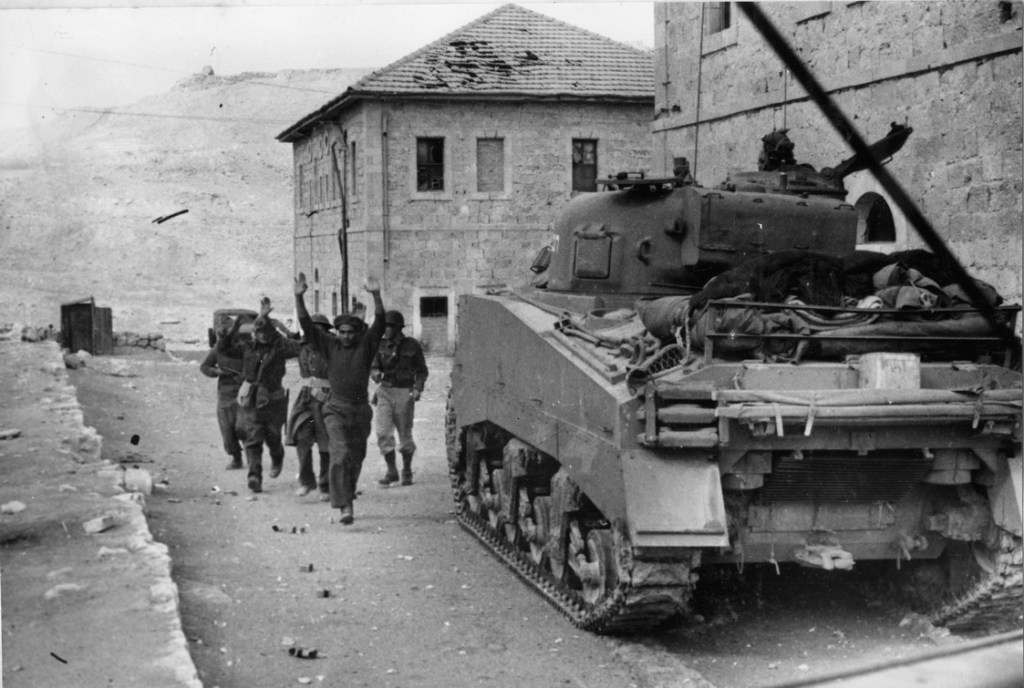
2.2 The truth
The tank that was destroyed, however, was the Mania. This must be the case for a few reasons: one, we know a tank was wrecked, as it was mentioned in multiple primary sources; two, the only tanks in service during that time that were in fighting condition were the Mania, the Tamar, Ruth II, and Cromwell 211, and all of them are clearly in photos postwar while the Mania is absent. Strangely enough, the engine of the Mania appears in a photograph from a day after its destruction, but as Israel did not use an M4A2 engine ever again, I believe it was thrown away or scrapped. Historian Amiad Brezner explicitly wrote how the Mania was destroyed, calling it the Sherman from British origin.
3. The Tamar and Sherman 12503
It has been pretty hard to track down Tamar’s post-war IDF number. Thankfully, a great friend of mine has sent me a link to a new online archive that I did not know of, there I found a photo of the Tamar on parade, clearly showing it is, in fact, Sherman number 12503, as I previously theorized, please note that the mantlet mounted M1919 .30 cal machinegun is absent in any post-war appearances of the Tamar.

We can clearly confirm this photo of Sherman 12503 is actually of the Tamar thanks to 4 major visual hints:
- The lack of a transmission cover stowage box
- The unoriginal “Plain” type sprocket
- The M34 mantlet
- The iconic engine deck stowage shelf (marked with the red arrow)
4. Ruth II, my great grandpa’s tank
Regarding Ruth II, her name’s origin is a bit hazy; one theory suggests it derives from the fact that another tank of the unit, Cromwell 211, was called Ruth or maybe the six-pounder half-track named Ruth which was part of a different company in the same battalion; however, it is also possible the crew operated another tank during World War Two called Ruth. Ruth II was the third Sherman to enter service during the Independence War and the last fully functional tank of the war. While it is not incredibly important to the Tamar story, it is critical to mention that, unlike the Tamar, Ruth II did get a transmission cover stowage box and did not receive the mantlet-mounted machine gun or the engine deck stowage. So as not to confuse people with over-identification within photos. Additionally, as for Ruth II, we have a pretty solid understanding of its postwar service. And we know that it received the number 12484. We also know it remained in service until 1952 at least, as my great-grandpa was Ruth II’s loader from 1950–52 under Brigade 7. He would later fight in 1956 Operation Kadesh under Brigade 27 in a half-track. He passed away from old age in 2017.

| Tank name | IDF number |
| Meir/Mania | 3999 |
| Tamar | 12503 |
| Ruth II | 12484 |
5. The photographic study
Most information that I gathered over time about the Tamar comes from photos. The Tamar is incredibly recognizable in photographs due to the name being written above the left fender, on both sides of the turret, and on the engine deck stowage shelf, as well as the mantlet, mounted M1919.

A picture of the Tamar shows its name written above the right fender and shows the M34 mantlet of a 105 turret refitted with a 75. Source: Yad la Shiryon Museum
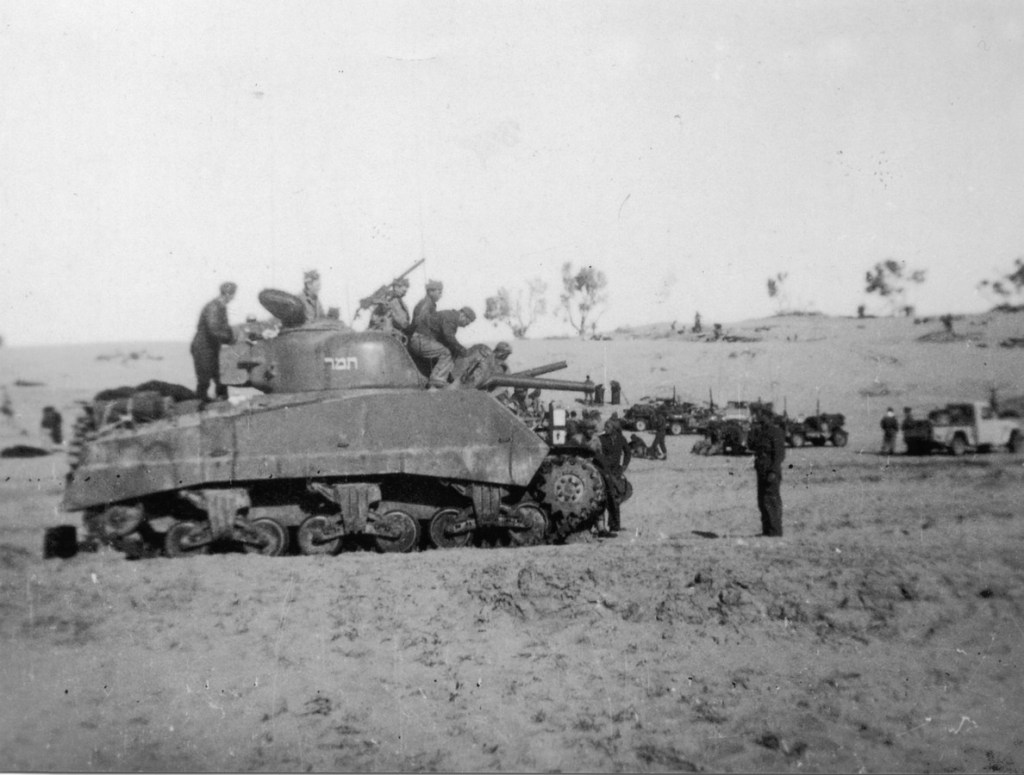
The Tamar’s name is written on the right side of the turret, note the sprocket, which isn’t a Chrysler standard sprocket but instead the plain sprocket, likely meaning the Israelis changed the sprockets during repairs with parts from the scrapyard. Source: Palmach archive.
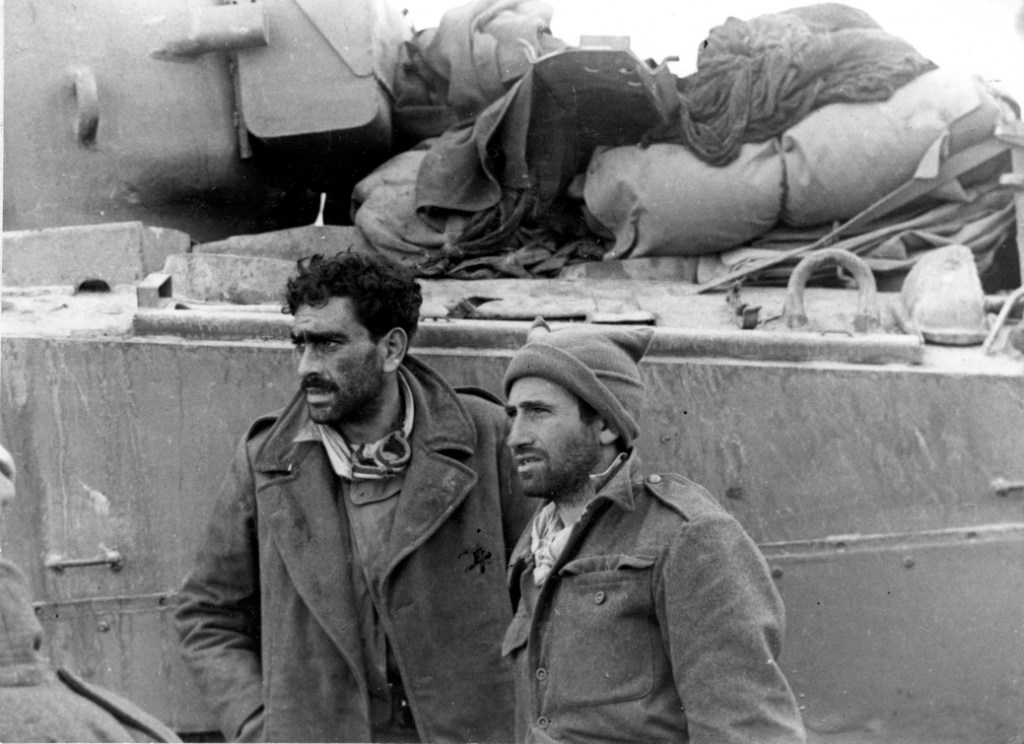
The Tamar (Identifiable by the materials carried on the engine deck as in the previous photo) clearly shows the British rear turret storage box. Source: Palmach archive.

The Tamar clearly shows an M1919 machine gun mounted on top of the mantlet, I believe this was done between the 25th and the 29th of December 1948, but sadly I can’t prove it. Note the sprocket matches that on the other side. Source: Fresh.co.il
6. IDF numbers
In the article, I mentioned 3 IDF numbers. IDF numbers are like serial numbers, being put on ground vehicles and big ground weapons, this includes everything from tanks and APCs to cars and towed cannons, they started with 3-digit numbers right after the formation of the IDF, and they are still used today, aside from special ones which are outside the scope of this article they generally start with the Hebrew letter Tzadik (צ) and a dash and then the digits, the number is written in white text on a black rectangle, sometimes painted on and sometimes on a metal plaque, as to prevent the enemy from knowing how many vehicles are in Israeli inventory the numbers will jump after a few digits, this is why we see Israeli Shermans jump from the 124XX-125XX series to 80XXX series, today tanks generally have a 6 digit number. Please note that during the IDFs infancy the numbers did not necessarily indicate which vehicle entered service when, as the numbers had to be added in a rushed way after the Independence War ended, this is why the Ruth II has a lower IDF number than the Tamar, even though it entered service after.

Sources:
- National Library of Israel
- Palmach archive
- Yad yitzchak ben-Tzvi
- Bitmuna
- Fresh military forum
- Ha-mesima: rehesh, Pinchas Veze.
- The Armor Craftsman, Col. Moshe Givati.
- Israeli Sherman, Thomas Gannon.
- Tanks of the Early IDF, Volume 1, Thomas Gannon.
- Moreshet-map.org.il
- Yad La-Shiryon Museum.
- Wild Broncos, Dr. Amiad Brezner.
- Lion & Lioness of the line, Volume 5 + 6, Dr. Robert Manasherob
- Himush.co.il
- JNF photo archive
- First Signs of Armour, Dr. Amiad Brezner.
I want to thank the assistance of (note these are discord tags):
Eta320#8337 (variant identification)
Nomad#1782 (variant identification)
ARTsigismondo#5017 (information gathering)
Sot#3686 (information gathering)
Jonathaniel Das Granatabru#3472 (information gathering)
ofekk213#6202 (information gathering)
